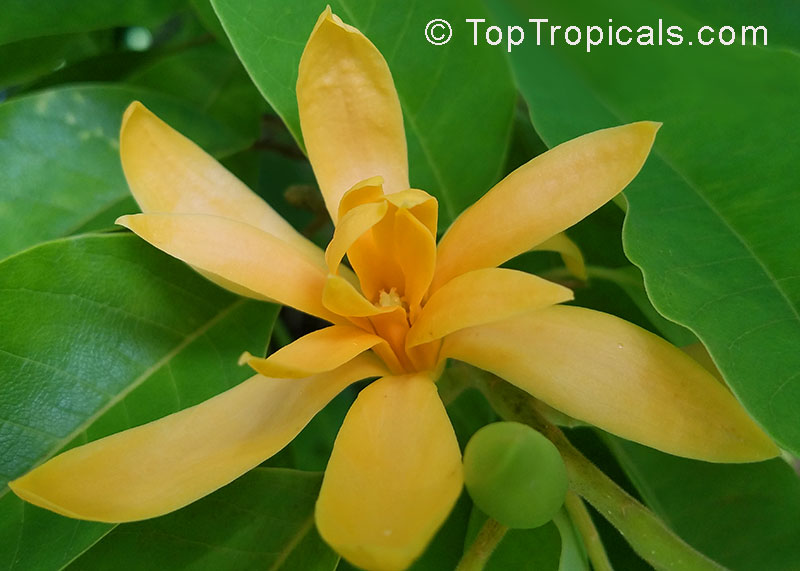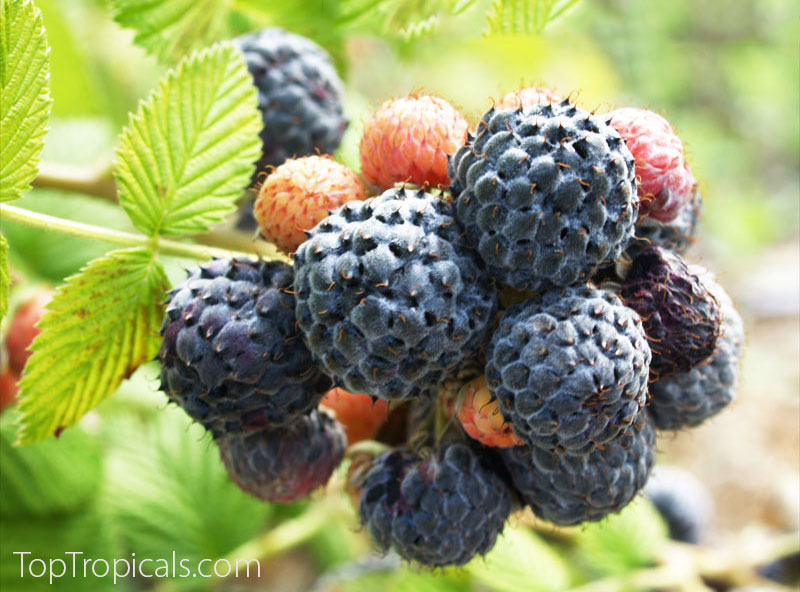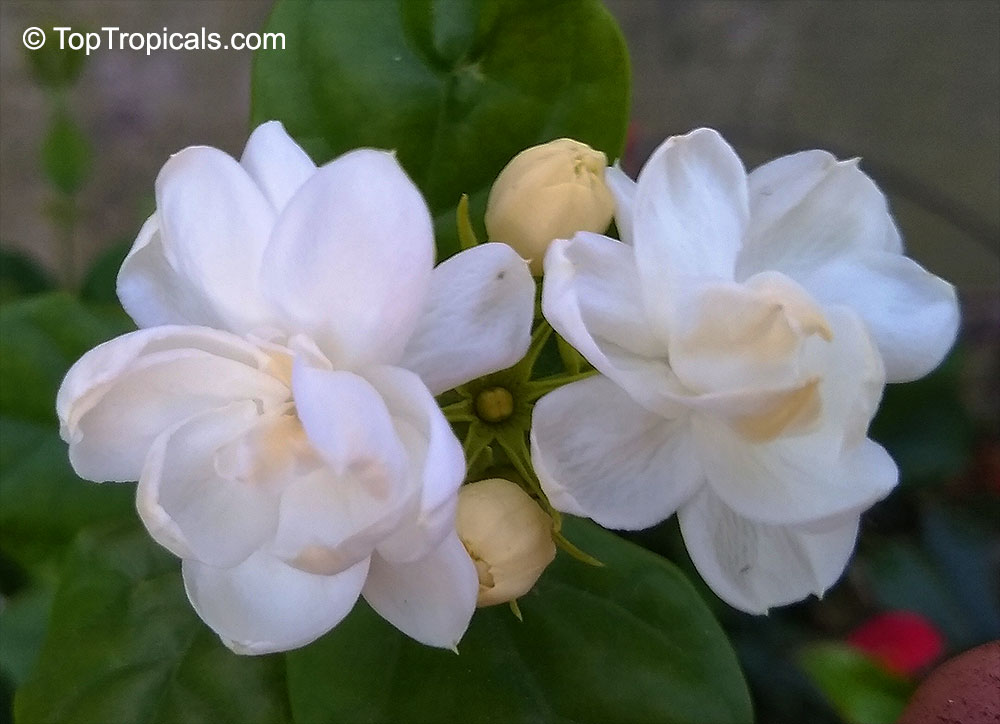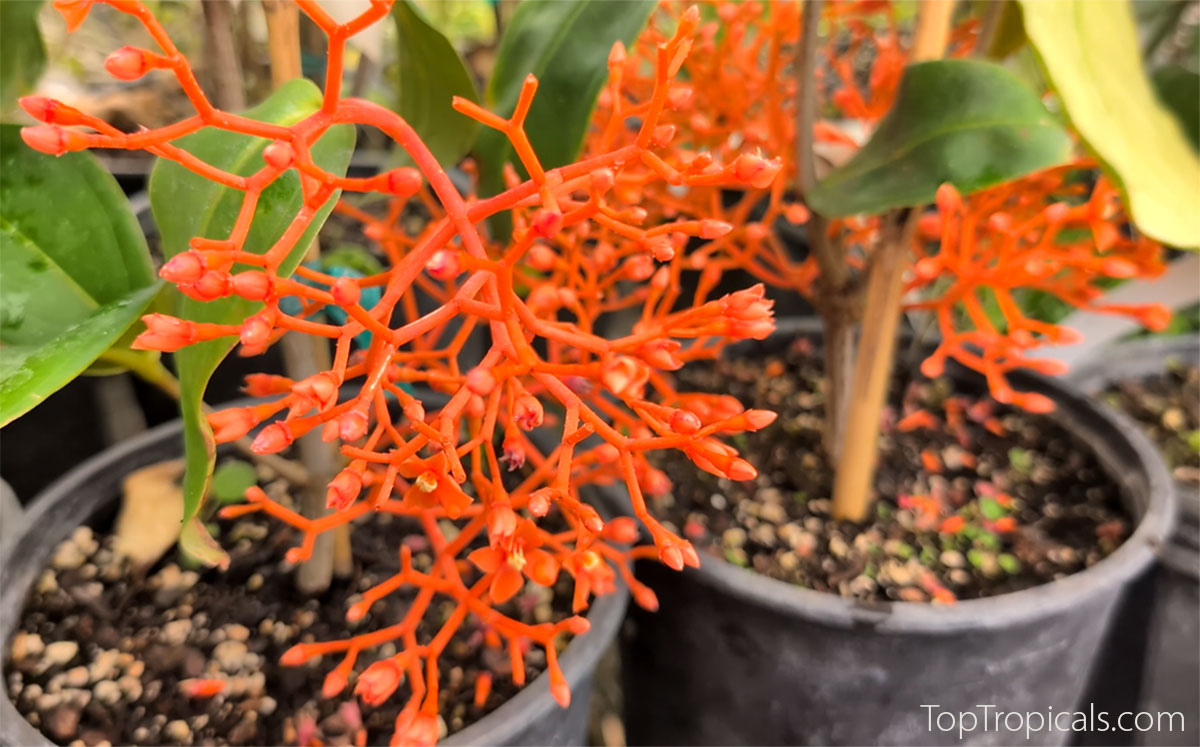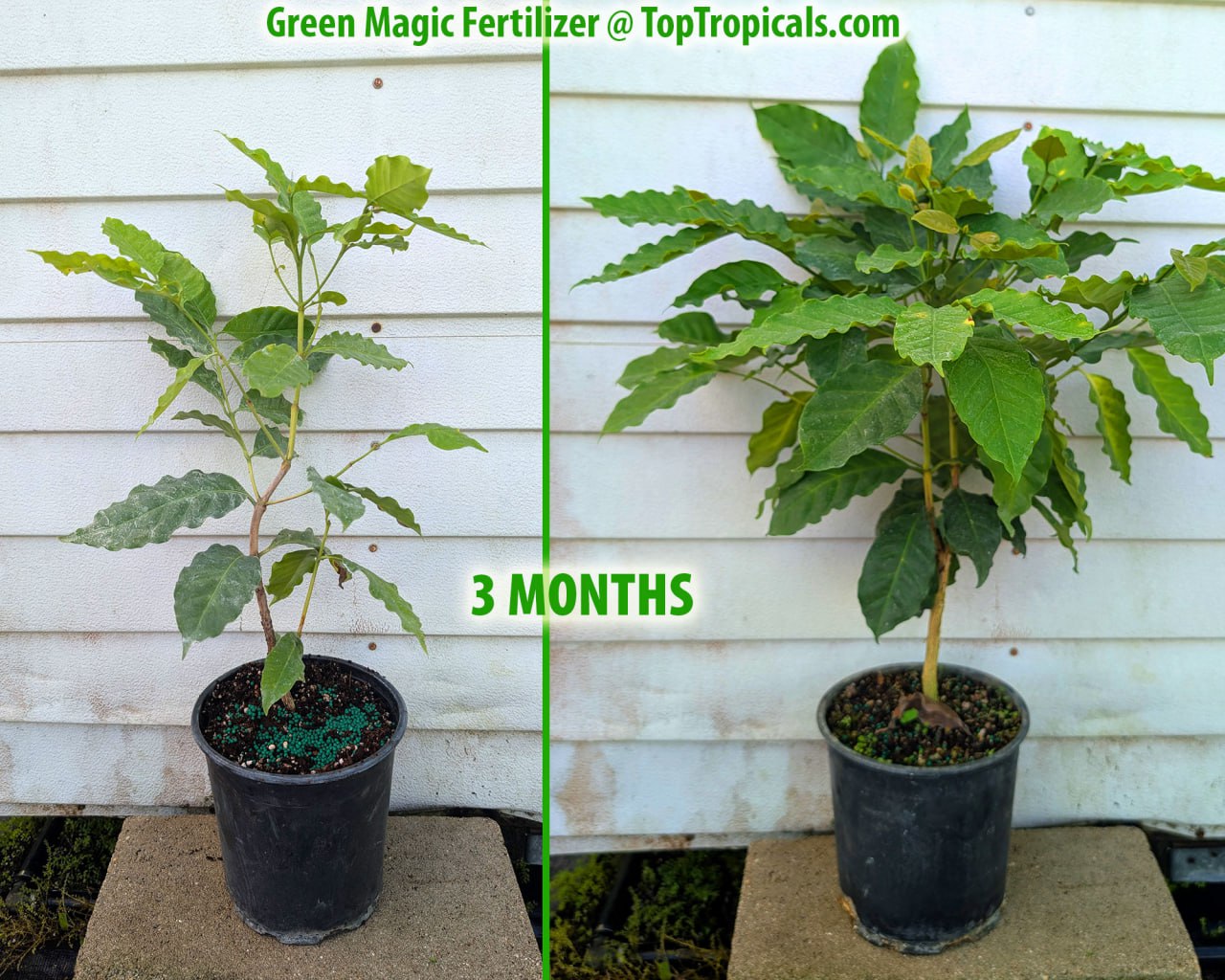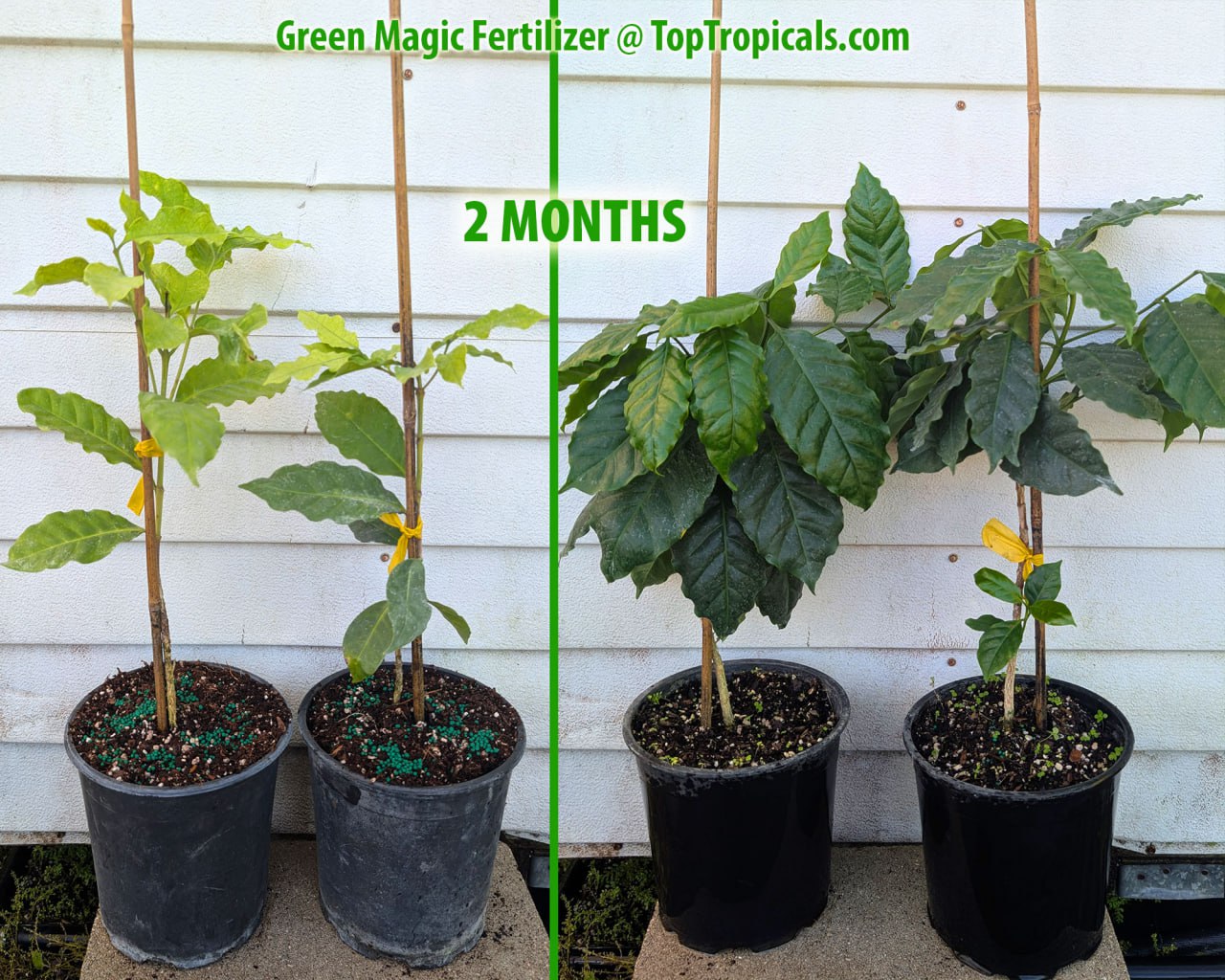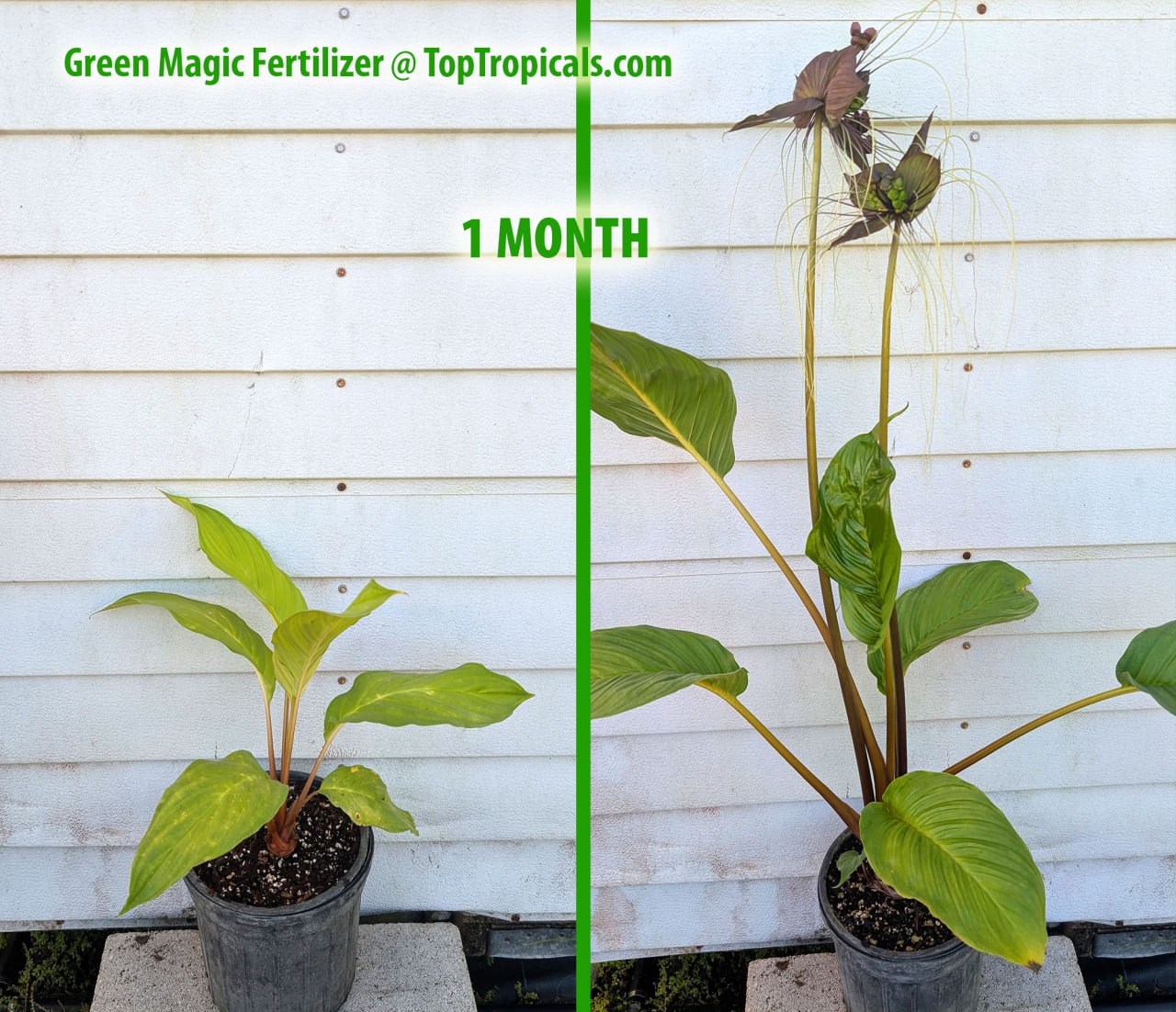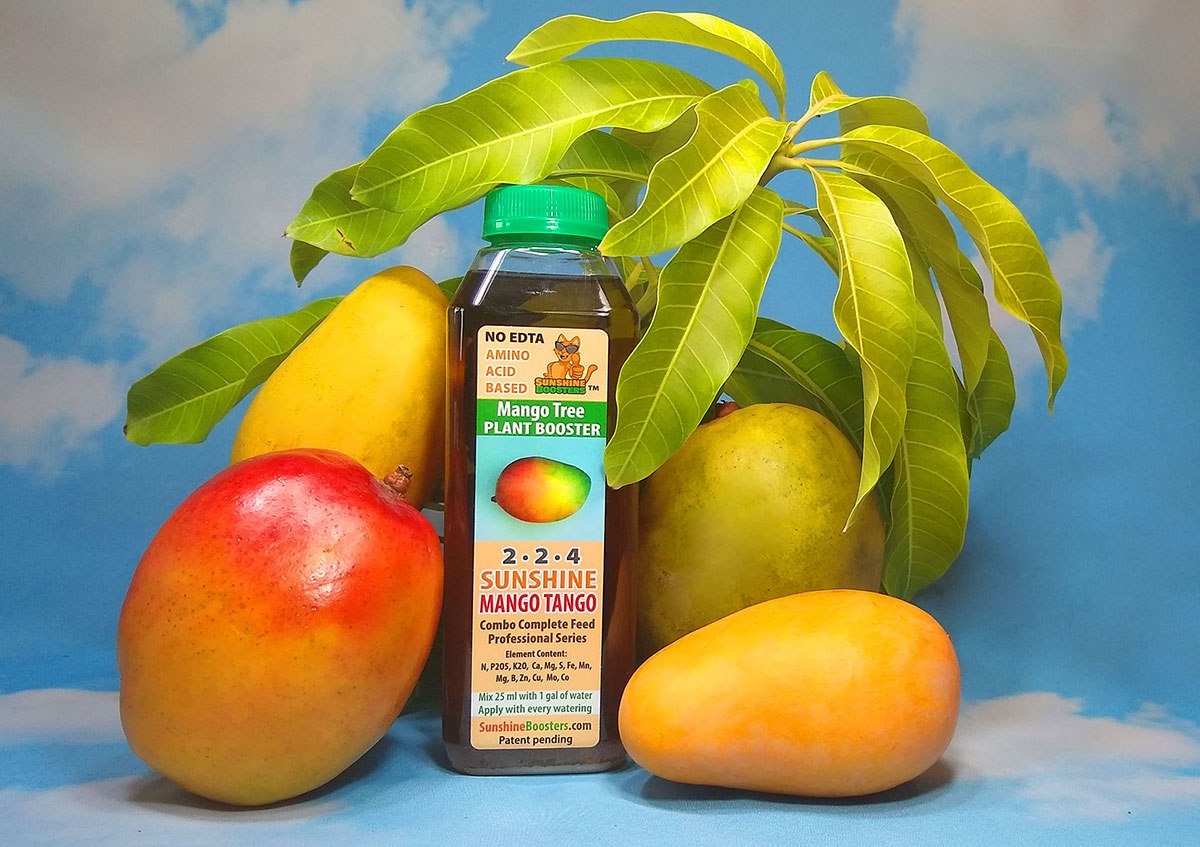Garden Blog - Top Tropicals
Date:
🎀 Five plant gifts she'll love this Mother's Day
Q: My mother loves gardening and I am thinking to buy her a live plant to make her happy. What plant do you recommend?
A: At Top Tropicals, we have a big selection of wonderful gift plants . Below are a few suggestions for you, these plants are large, developed and ready to bloom or fruit!
1. Joy Perfume Tree
The
Champaka or Joy Perfume Tree (Magnolia champaca) - is a top choice for
Southern landscapes, prized for its striking columnar shape and fragrant,
fruity bubble gum-scented blooms - you won't be able to stop sticking your nose
in this flower! A signature plant at Top Tropicals, it's known for producing
the world's most expensive perfume, Joy. The Joy Perfume Tree blooms on and
off year-round and is currently in full bloom at our farm in Sebring, FL,
filling the air around with fantastic sweet scent. This tree thrives in both pots
and the ground, growing bushy and full as it matures. At Top Tropicals, we
have beautiful Champaka trees in all sizes, from 3-4 ft tall (ready to bloom in a year) to 6-10 ft tall (already
bloomed) for local pick up or delivery.
Learn more, with a short video.
2. Tropical Raspberry Mysore
Tropical
Raspberry Mysore (Rubus albescens) - is the perfect solution for those missing
Northern fruit in hot climates. Unlike traditional raspberries that can't
handle the heat, this fast-growing Raspberry from India thrives in humid, hot
conditions and produces juicy, sweet fruit almost year-round! The clusters of
purple-black fruit are packed with flavor, and the plant is perfect for large
containers, producing plenty of fruit in no time. Cold-hardy to the upper 20s
F, it's an easy-to-grow, fast producer. We have beautiful, fruit-ready 3 gal Raspberry
bushes, ready to add a burst of sweetness to your garden!
Learn more, with a short
video.
3. Fragrant Jasmine Sambac
Jasminum
Sambac is widely regarded as the most fragrant jasmine, cherished by
tropical gardeners and plant collectors alike. Native to India, this jasmine is the
source of jasmine perfume oil and the signature ingredient in jasmine tea.
With various varieties offering unique flower sizes, shapes, and growth
habits, it’' perfect for both sun and shade, thriving as a container plant or
indoor favorite. Its delightful fragrance fills the air, and with the help
of
Sunshine Pikake plant booster, you can enjoy even more blooms. Jasmine Sambac,
along with Champaka, is another signature plant of Top Tropicals. Through the decades, we've collected all the available varieties in cultivation - check them out!
Learn more about Jasmine Sambac
varieties, with a short video.
4. Everbearing mulberry
The Dwarf
Everbearing Mulberry (Morus sp.) - is the perfect way to enjoy fruit
year-round! This beautiful, cold hardy bush produces sweet, juicy mulberries starting
from the very first year - often the same season you plant it. With its dwarf
habit (easily maintained at 4-6 ft), it's perfect for containers and small
spaces. Cold-hardy and drought-resistant, this productive plant thrives in
various climates, from USDA zones 5 to 10! The fast-growing Mulberry will provide
fruit year-round, and with minimal care, it will flourish in almost any soil. Our
Everbearing Mulberry bushes produce enough fruit for both birds and breakfast - we pick a handful every day!
Learn more, with a
short video.
5. Medinilla Coral Spike
Rare Medinilla
scortechinii - Orange Coral Spike - is a rare gem that brings a touch of
the ocean to your garden! With bright orange stems bursting into star-shaped
blooms, it looks like something straight from a coral reef. Compact and easy to
grow, this plant stays under 2-3 ft tall, making it perfect for pots,
hanging baskets, or as an epiphytic accent. The glossy dark leaves contrast
beautifully with the vibrant orange panicles, and it thrives in bright shade. A must-have for collectors of unusual
tropical plants, this coral spike adds a bold pop of orange wherever it grows - but hurry, it doesn't stay in stock for long!
Learn more, with a short video.
When do I get the fruit from my Dragon Fruit?
Dragon fruit varieties
- 🌵Dragon Fruit (Pitaya) is one of the most rewarding exotic fruits to grow. Sweet pulp, striking looks, and plenty of health benefits make it a favorite. You'll see it in three main types: white-fleshed (Hylocereus undatus), red-fleshed (Hylocereus costaricensis), and yellow-skinned (Hylocereus, or Selenicereus megalanthus).
- 🌵Don't want to wait years for fruit? Here’s the good news: unlike many tropical trees that test your patience, dragon fruit is a fast-fruiting, easy-going cactus. With the right care, you can harvest in just 1-2 years from a cutting - or even the same season if you plant a well-established specimen.
- 🌵 How to get Dragon Fruit faster
- ▫️Give it strong support - trellis, fence, or post. This cactus loves to climb.
- ▫️Full sun and good drainage - sandy or well-draining soil works best.
- ▫️Smart watering - water deeply in hot weather, then let the soil dry. Dragon fruit loves water during active summer growth, but remember it's still a cactus - don’t keep soil soggy.
- ▫️Pollination matters - flowers open at night. Some varieties are self-fertile, but planting a few different types boosts fruit set. This is why it helps to keep several varieties close together.
- ▫️Feed well - use organic liquid fertilizers like Sunshine Boosters C-Cibus with every watering, or Green Magic controlled-release fertilizer every 6 months.
With these steps, dragon fruit quickly rewards you with flowers, followed by colorful, delicious fruit. Few exotics are this easy - or this fast!
🛒 Start your fast-growing Dragon Fruit production
📚 Learn more:
- · Pitaya vs Dragon fruit - what is the difference and how to grow it. Varieties.
- · The secret to abundant dragon fruit harvests
- · How to grow Dragon Fruit from a cutting - Quick Guide
- · How to grow Dragon Fruit 📱
- · Planting your own Dragon Fruit plantation
- · Do-It-Yourself Support Structure for Dragon Fruit
- · Grow Your Own Exotic Dragon Fruit Garden
- · Top 10 fruit you'll ever need for your health benefits: Dragon fruit
- · What does Dragon Fruit Flower look like?
- · Why you need to grow your own dragon fruit
- · Do red, white and yellow Dragon fruit taste differently?
- · What to do with a lot of Dragon Fruit
#Food_Forest #How_to #Dragon_Fruit
🟢 Join 👉 TopTropicals
The SECRET growers never tell you: simple trick how to bring plants back to life and keep green
Green Magic Fetilizer makes plants green
- 💚 Green Magic is plant food that really works. It keeps your plants green, strong, and growing steady.
- 💚 We call it Magic - because it even brought back plants we thought were gone! So thу Green Magic can bring dead to live!
- 💚 The secret is slow release. Most dry fertilizers dump everything at once, burn the roots, then disappear. Green Magic feeds little by little for six months straight. No burn, no guesswork, just steady food that plants love.
- 💚 It's perfect for potted fruit trees, ornamentals, and houseplants. One handful is all it takes, and your plants stay fed for half a year.
- ✔️How to use:
- ✔️ Why it works:
Mix in 1 teaspoon per gallon of soil when potting, or sprinkle on top once every six months. That's it!
- ▫️Feeds slowly and evenly for six months
- ▫️Keeps leaves green and plants healthy
- ▫️Strong growth, even for weak or struggling plants
- ▫️Works in any climate, indoors or out
- ▫️Great for containers, trees, and ornamentals
- ▫️This isn’t a flower booster. It’s a growth booster. The kind of steady food that builds strong plants for life.
- 👉 Watch your plants come back to life and thrive with this professional-grade, controlled-release fertilizer - Green Magic. Even struggling plants can turn lush and green again.
Give it a try - your plants will thank you!
🛒 Buy once, feed for 6 months!
📚 Learn more
- ▫️How to make plants green quickly? Green Magic - the fertilizer that truly works like magic!
- ▫️Green Magic guaranteed analysis: give your plants their magic treat
- ▫️How to re-pot a plant properly?
#Fertilizers #How_to
🟢 Join 👉 TopTropicals
Green Magic effect: before and after
Green Magic test results: before and after application.
Are you still thinking? Try it out! (Sample here)
#Fertilizers #How_to
🟢 Join 👉 TopTropicals
How do we ship plants? Part 1: prepare the plant
How do we ship plants? Part 1: prepare the plant.
- 📦 We hear it all the time: "You guys ship plants? Wow! How do you ship a plant? It's... live!"
- 📦 Well, we've been doing it for almost 25 years now - that's a quarter of a century! Top Tropicals was one of the first nurseries to figure out plant shipping, long before Amazon and all the big online platforms where today you can order just about anything.
- 📦 After so many years, our Team worked it to perfection. Want to see how it's done?
- 📦 Like they say, it's better to see once than hear a hundred times. In this video, we'll show you the tricks that keep plants safe on their journey from our nursery to your doorstep.
🎥 Part 1 covers how we prepare the plant before it goes into the box.
❗️Stay tuned for the next step in our upcoming video!
🛒 Shop plants online
📚 Learn more:
Shipping information page
#How_to
🟢 Join 👉 TopTropicals
Thornless Bougainvillea Tree Video:
How to get your own Dragon Fruit plantation:
#Food_Forest #How_to #Dragon_Fruit
🔴 Join 👉 TopTropicals
Pre-hurricane season tips: how to protect your trees from winds
Some trees like mango have deep roots and handle wind well. Others - like our favorites Spathodea campanulata - African Tulip Tree or Tabebuia caraiba - Yellow trumpet tree (in the photos) - need extra care. You've likely seen crooked Tabebuias in South Florida or lost a bushy Tulip Tree to strong winds. Their wide crowns act like sails in a storm.
💨 To help your trees withstand wind damage:
- ✅ Stake young trees with strong support - use a tripod-style setup (three bamboo sticks or boards secured around the tree for balance from all sides)
- ✅ Check and adjust supports every 6 months
- ✅ Trim long or rubbing branches - they break first
- ✅ Add extra support if a storm is coming (larger trees benefit from sturdy tripod-style bracing with boards)
- ✅ Lighten bushy growth, less sail = more survival
💡 Some remove all leaves from plumeria before a hurricane - it works!
💡 We pruned our Tulip Tree and Ceiba - and they withstood Hurricane Milton while others fell
- ✅ If a tree falls, stand it up ASAP and support it. Trim broken branches - they’ll remind you what needed pruning before, not after!
- ✅ Trees protected young, grow strong for life.
🛒 Grab your beautiful Tulip Tree and Tabebuia Tree today - support them early for strength and beauty later!
📚Learn more:
Everyone loves these tulips growing on a tree
#How_to #Trees #Discover
🔴 Join 👉 TopTropicals
How to Plant a Tree - A Fun Guide
1️⃣ Dig a Big Hole
Start by digging a hole 2-3 times the size of the pot. Make sure it's deep enough to give your tree's roots room to grow. Remove any sandy dirt or rocks—replace them with rich, nutrient-packed soil to help your tree establish.
2️⃣ Place the Tree Just Right
Gently remove your tree from the pot and place it in the hole. The base of the tree (where the roots meet the trunk) should sit slightly above ground level (2-3"). Avoid covering the trunk with soil to allow for proper air circulation and to promote a healthy tree.
3️⃣ Mound the Soil
Add nutrient-rich soil around the roots, then toss in a handful of granulated fertilizer. With the leftover soil, build a little mound around the tree to form a "bagel" shape. This will help water stay around the roots and give your tree a strong start.
4️⃣ Add Mulch and Water
Spread mulch around the tree, but leave a small gap around the trunk. Water generously to settle the soil and give your tree a refreshing drink. Water by hand daily for the first couple of weeks or until you see new growth. After that, you can rely on sprinklers.
⭐️ With these simple steps, your tree will be off to a great start!
🛒 Go plant shopping to excersize your green thumb and make our planet better
📚Learn more:
How to plant a tree: care of mail-order plants and detailed planting instructions (PDF)
#How_to #Trees #Discover
🔴 Join 👉 TopTropicals
How to make a Mango tree fruit?
We use SUNSHINE Mango Tango - Mango Tree Booster, for healthy mango trees and profuse fruit production.
📚 Learn how to make a Mango tree fruit
#Food_Forest #How_to #Fertilizers
TopTropicals.com
We Grow Happiness
